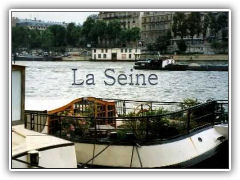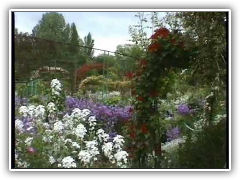
A rainy night in Paris, and tour of Monet's Gardens
Click thumbnail for YouTube video
Please use browser's BACK arrow to return to VideOccasions
Click thumbnail for YouTube video
Please use browser's BACK arrow to return to VideOccasions
Both clips have a clearly defined beginning, middle and end. At Giverny we see three visitors approaching the museum and garden, follow them as they explore the grounds and see them enjoying a relaxing coffee at the conclusion of their tour.
On the Seine we go from the Bateaux Mouches sign and purchasing tickets to disembarking at the conclusion of the rainy tour of the grand Paris waterway.
In both instances this is not the result of serendipity but of planning. You can do this too. Use the mantra of news reporters: who? what? where? when? Instead of using words, use pictures. Establish where you are and who's with you. Look for a sign or picture or a scene that tells where you are. Show what you're doing there and if possible who's doing it with you. Finally, show how it all wraps up.
It's as simple as this: Go to Epcot at Disney World. Shoot some footage of your family at the turnstiles, with the big silver sphere in the background. Then spend the day, taking footage of whatever fun things they are doing. Finally, take a shot from behind the silver sphere, a portion of it illuminated, with the family exiting, then turning to look back at the sphere (and you and the camera.) Sure the entrance and exit are staged: but they're the "money shots," the clips that tell and sell the story.
Shoot your holiday footage with this in mind and you'll surprise yourself with the results and delight those who watch your presentation!

La Seine and Giverny


La Seine and Giverny were produced from footage taken in France in 1996. They are included here because they illustrate how story-telling with your camera can be achieved even when shooting impromptu, on vacation for example.
Last Revised 4/17/13